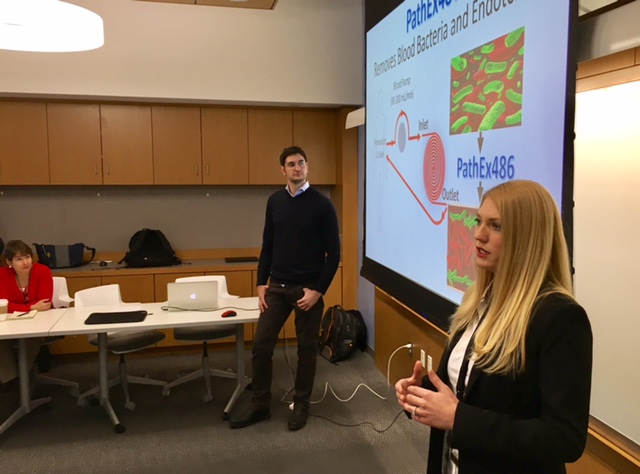
Robert Webster III launched his first company, Virtuoso Surgical, in April. He completed the National Science Foundation’s I-Corps program for new tech companies in early August.
And by the start of classes, the associate professor of mechanical and electrical engineering was passing along the lessons he learned to eight young entrepreneurs in a new class.
“I thought, ‘Well, I’m at least six months ahead of the students,’” Webster after watching their final presentations for IMPACT: Initiating, Maximizing, Promoting, and Accelerating Commercialization and Translation. “My goal was to take the I-Corps curriculum and adapt it to medical devices, which required adding information on regulatory and intellectual property issues.”

“And my version wasn’t as painful,” he joked.
The class is a cooperative effort between the Vanderbilt Institute in Surgery and Engineering and the Vanderbilt Center for Technology Transfer and Commercialization, aimed at helping engineering graduate students launch their own companies. They heard from lecturers from the medical school and various engineering disciplines, worked in labs and interviewed 70 potential customers.
Sinead Miller, a Ph.D. student in biomedical engineering, said IMPACT was the most useful course she’s taken at Vanderbilt. She heard about it from a fellow PhD student who completed I-Corps.
Miller launched her company, PathEx, in the middle of the semester. The company will make a device that treats the root cause of sepsis by removing bacteria and endotoxins from the blood.
“At the beginning of the course, I did not know the first thing about starting a company, regulatory strategy or figuring out the customer’s actual needs vs. what I think those needs are,” Miller said. “I didn’t even have a functional pitch deck to show potential investors.”
Now, not only does she have the company, she has applied for a Small Business Technology Transfer grant and for a Memphis business accelerator. Her partner for the course was Frederico Campisano, a PhD student in mechanical engineering, but he’s not involved with PathEx.
For the final, students pitched their companies to an audience of engineering and medical professors, fellow graduate students, physicians and nurses, and fielded tough questions about devices.
The other teams were:
- LumaSil, biomedical engineering master’s student John Mendoza (BE’16) and mechanical engineering PhD student Patrick Anderson. Provides blue and infrared light treatment for chronic diabetic wounds.
- SpineX, mechanical engineering PhD students Matthew Yandell and Erik Lamers. Created a $200 fabric exoskeleton worn beneath scrubs to help nurses with safe lifting.
- KickIt Health, undergraduate Kevin Cyr (ES’17) mechanical engineering PhD student Patrick Wellborn. Redesigned the IV stand for more base stability and to encourage early mobilization with a support bar.
Other IMPACT instructors were Byron Smith, an alumnus and founder of EndoInSight Inc., and Chris Harris, Vanderbilt CTTC director of licensing.

Contact
Heidi Hall, (615) 322-6614
Heidi.Hall@Vanderbilt.edu
On Twitter @VUEngineering